While there were a few submarines used before the First World War, most notably Hunley, the real tale of the war against the submarine didn't begin until the outbreak of that war.
In 1914, nobody was really sure how to attack a submerged submarine, or even how to reliably detect one. Submarines were detected by lookouts and attacked on the surface with guns, or if they had just submerged, by ramming. The initial British plan involved the use of explosive paravanes, closely related to those used for minesweeping. These were not particularly effective, and navies began to look for alternatives. One that was used extensively was the naval mine, from small fields off enemy bases to the massive North Sea Mine Barrage. Various types of nets were tried to detect submarines passing checkpoints, none of which worked particularly well. Even weirder and more useless were the various hand-thrown weapons that the British issued to their sailors.
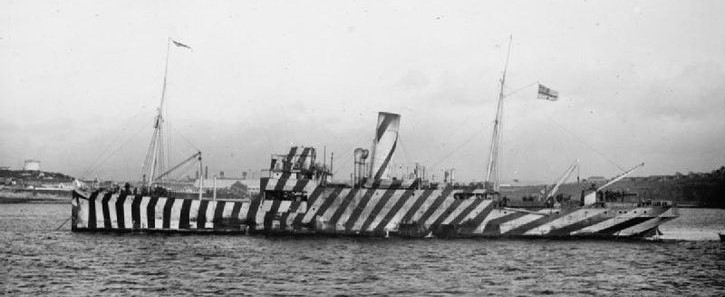
Q-ship HMS Underwing2
At the beginning of the war, all of the various powers expected the traditional Prize Rules to apply. This meant that the submarine had to surface, board and secure the safety of the passengers. Only escorted ships could be fired upon without warning. To take advantage of this, the British introduced the Q-ship, an armed vessel disguised as a merchant ship. When the U-boat came alongside to take the ship under prize rules, the Q-ship would open fire, sinking it. In practice, it didn't work that well. Q-ships sunk 14 U-boats, but twice that number were lost.
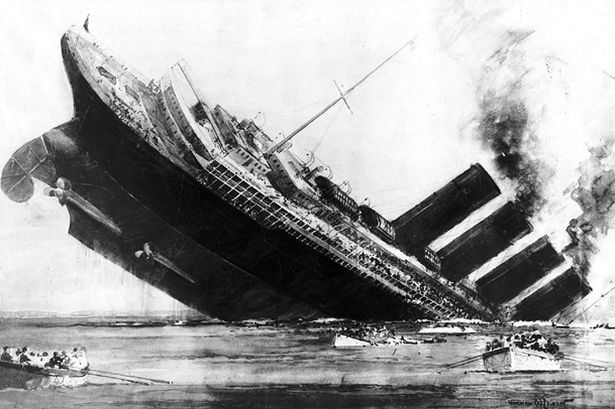
Lusitania sinking
In reaction to the Q-ships, among other reasons, the Germans began unrestricted submarine warfare, a policy of sinking unescorted ships without warning. This policy was implemented in early 1915, then abandoned mid-year due to American diplomatic pressure after the sinking of the ocean liner Lusitania. That said, the limited number of torpedoes a U-boat could carry meant that small ships were often attacked using guns on the surface, as they were usually lightly armed and easy to sink.
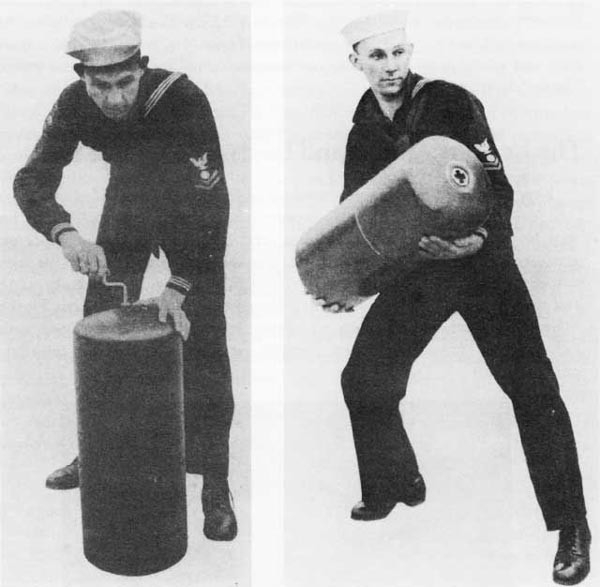
An early depth charge, simply thrown over the side
During 1915, the Allies finally came up with an effective weapon against submerged submarines. The depth charge was a powerful bomb triggered at a specific depth. The first models were fired by a lanyard attached to a float, while later ones used a pressure fuse. Water is excellent at transmitting shocks, and depth charges did their damage through blast effect. The British Type D, with 300 lbs of explosives, was estimated to be able to destroy a submarine within 70', and damage any within 140', although the actual numbers were significantly smaller.
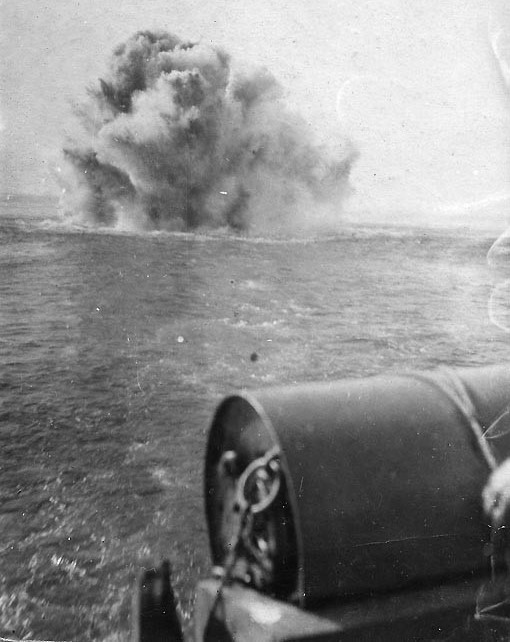
A depth charge exploding; note depth charge in the foreground
The biggest limitation on depth charges was that they had to be dropped directly off the ship, which made it impossible to cover a large enough area to reliably kill submarines. The British developed several different weapons capable of throwing bombs up to a mile to use against submarines on or near the surface. These were not particularly effective, due to their low rate of fire and resulting inability to cover large areas. A more effective weapon was the depth-charge thrower, which would fire depth charges to the sides of the ship, expanding the area covered by an attack significantly.
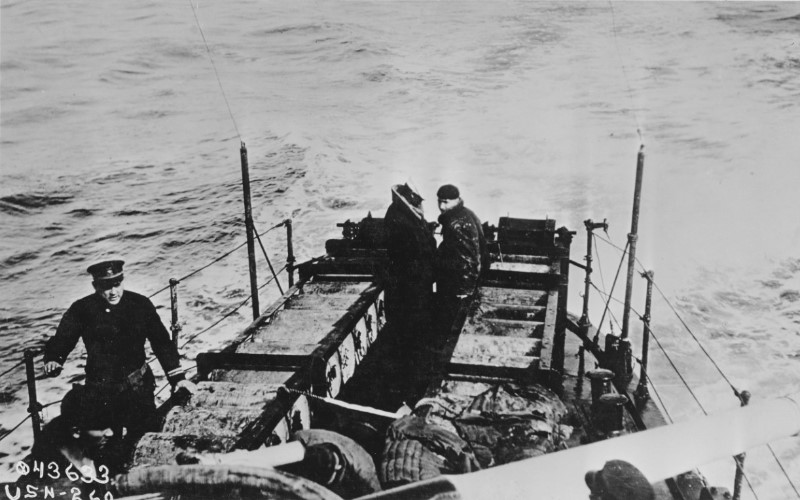
Depth charge tracks on the stern of a destroyer
In February of 1917, with the British blockade of Germany growing more painful, the Germans reintroduced unrestricted submarine warfare. Allied shipping losses rose quickly, reaching 860,000 tons in April. The British attempted to step up their hunting of submarines, aided by the use of radio intelligence (both codebreaking and direction-finding). However, this did not prove effective, and eventually convoying was introduced.
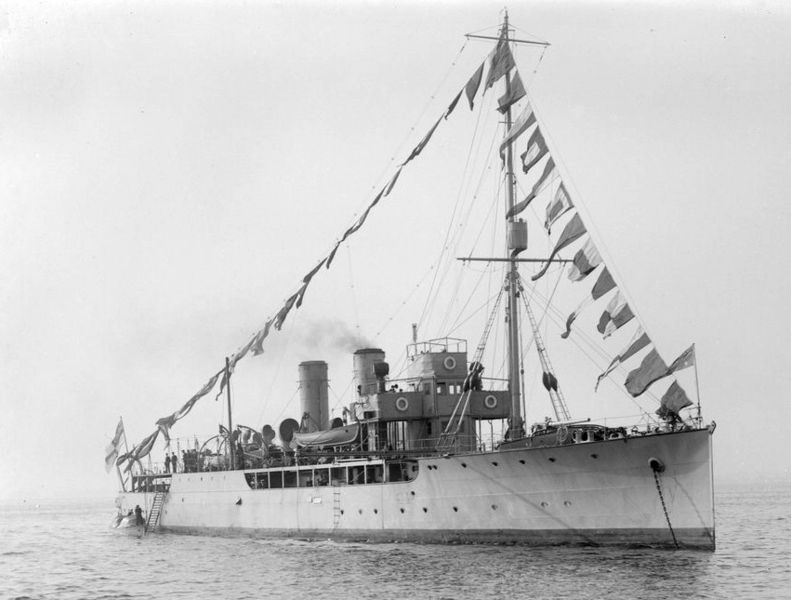
Escort HMS Geranium
Convoying is the practice of gathering a group of merchant ships and escorting them from one point to another. Besides allowing the escorts to be concentrated, it has other benefits that were not discovered until WWII. Specifically, submarines of the time took a long time to reload their torpedoes and were slow while submerged. This meant that they could only sink a few ships per convoy, regardless of the size of the convoy.3 Convoys had their drawbacks, though. A convoy was slower than ships sailing individually, and the arrival of a mass of ships tended to overwhelm port facilities, so using them considerably reduced carrying capacity.
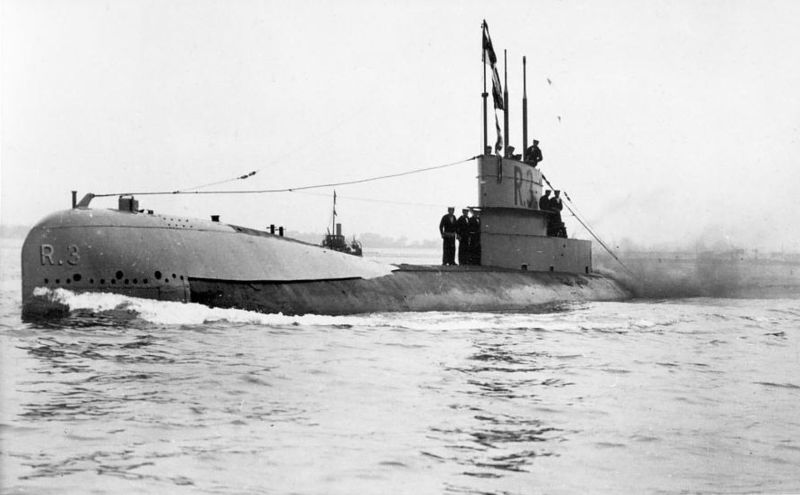
Submarine HMS R3
Besides convoys, other methods were taken to deal with the U-boats. Submarines were one of the leading killers of other submarines during the war, accounting for almost 10% of U-boats lost. This was universally the result of a submerged submarine seeing a surfaced one, either in transit or while on patrol. The British made extensive use of this, and even built a specialized class of submarine, the R class, specifically for this task. The R class had excellent underwater performance, foreshadowing the famous German Type XXI by a quarter-century.
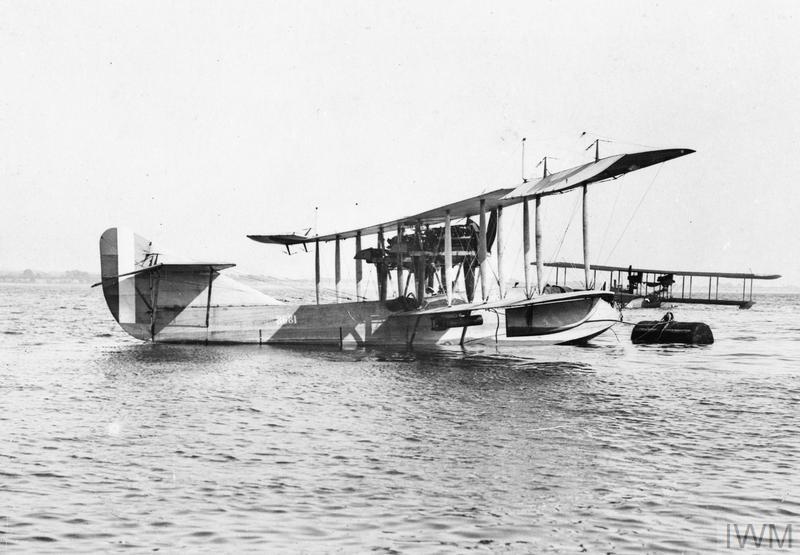
Curtiss Large America flying boat
Aircraft were also used extensively. Initially, lighter-than-air vehicles were the method of choice, due to their long endurance. Later, flying boats were used extensively. Aircraft were not particularly effective, sinking only 5 submarines in total, but their presence was a powerful deterrent to submarines. Late in the war, the British began "scarecrow" patrols, flying obsolete aircraft along the coast to force U-boats to dive.4
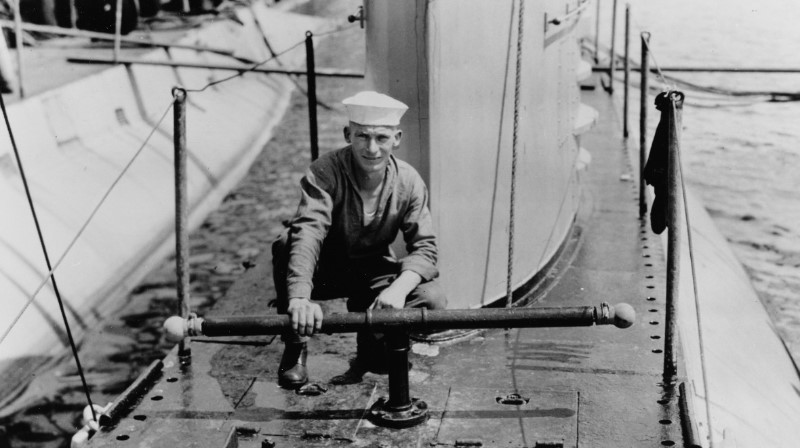
SC Tube passive hydrophone
The biggest problem during the war was the lack of a means of detecting submerged submarines. One early British attempt was to train seagulls to land on periscopes, but it ended about as well as you'd expect. More successful was the use of magnetic induction loops to detect submarines attempting to gain access to harbors and other areas of shallow water, but these were limited to small areas. The majority of research and success came from underwater listening devices known as hydrophones. A number of these were developed, but almost all suffered from a major flaw: to avoid self-noise blanketing the sounds of the submarine, a ship had to come to a dead stop and shut down most auxiliaries. The early hydrophones were also omnidirectional, which made it hard to locate a submarine accurately enough to attack. Later versions were directional, and by the end of the war, a few towed systems had been developed which could be used while the ship was under way. These systems were not particularly effective, as only 3 sinkings were made by patrol groups using acoustic detection.
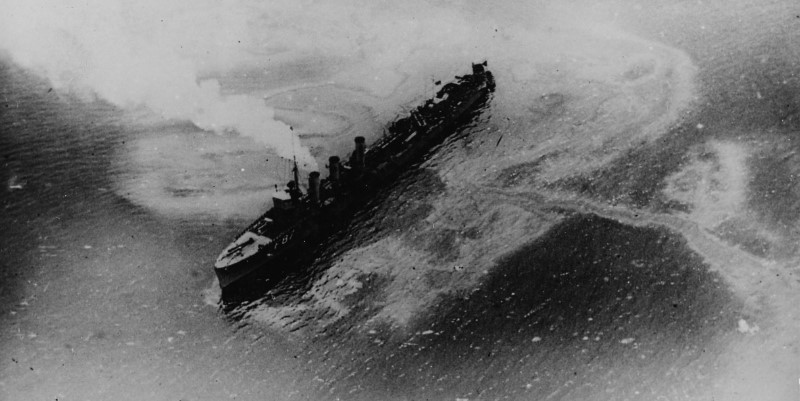
Destroyer HMS Tetrarch with an oil slick produced by a submarine
The story of ASW in WWI is both interesting in how many later developments were foreshadowed and astonishing in how primitive the efforts made were. But work during the war and in the immediate postwar years laid the foundation for the great battles between submarines and their opponents during WWII.
1 Strictly speaking, this is a minesweeping paravane from WWII. You try finding pictures for something like this. ⇑
2 Underwing is painted in dazzle camouflage, designed to make it harder for a submarine to figure out her course and speed through a periscope. ⇑
3 One of the reasons it took so long for convoys to be adopted was that a major British study in the 1870s had shown them to be a bad idea against surface ships. The main difference is that a surface raider would be able to sink ships quickly, and would be much faster relative to the merchant ships. A big enough raider could overwhelm any feasible escort, and raiders were likely to be much bigger than in the days of sail. ⇑
4 Submarines of the time are best thought of as surface ships that could submerge to hide, not as craft that are most effective underwater like modern submarines. The only way to travel long distances or to recharge the batteries was to cruise on the surface, and it also made it easier to spot potential prey. Forcing a submarine down slowed it from usually about 15 kts to 4 at most. ⇑
For more on WWI ASW, see Hunters and Killers, Volume 1.

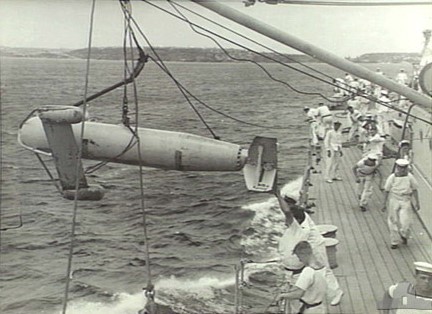
Comments
Wow, given the reputation of Q-boats, I'm amazed to hear those statistics. Somehow I suspect the recruiting pitch didn't include 'you unmask your guns, and then you probably die without accomplishing much, although you might give them a brief scare'.
Any idea why they were so ineffective? Too hard to convert a merchant ship into something effective in combat, still with the appearance of a merchant? Crews without much gunnery practice? U-boots having the initiative?
About half the Q-ships lost were torpedoed without warning, so that's a big part of the answer. I'd guess that a big chunk of the rest were cases where the U-boat submerged before the Q-ship disabled/sunk it, and then torpedoed the Q-ship.
Was there ever any concern about Q-ships from a legitimisation point of view? That is, if the Germans could point to the existence of warships disguised as shipping, they'd re-activate unrestricted submarine warfare and be 'in the right' in some relevant sense?
I'm not 100% sure, but a quick check of Fighting the Great War at Sea suggests that there wasn't. If they did think that far ahead (and the lack of thought on some of this kind of stuff is rather weird at times) they might have considered that a potential plus. Unrestricted submarine warfare was likely to irritate the US and bring them into the war, regardless of the justifications. But they probably didn't think that, either.
I suspect a typical merchant ship would take even one chance in three over being totally defenceless, given the choice.
@Alsadius
Care to expand on that? I'm not quite sure where you're coming from. Q-ships weren't just armed merchant ships, they were naval vessels disguised as merchant ships. As for the value of armament itself, that's a question for the operations research people. Guns are comforting, and many merchant ships were armed (this resulted in a lot of pre-dreadnoughts being stripped of QF guns), but it may or may not have made sense when they looked at the math. But the relevant math wasn't invented until the next war. (A topic for later, but a very interesting one.)